The itchiness of eczema can be uncomfortable and unpleasant to experience at any age, but parents of babies and children who suffer from the skin condition are often left feeling helpless as to what they can do to ease it. But what exactly is eczema, what treatment options are available and how can parents help reduce the discomfort?
Eczema, or dermatitis as it’s sometimes known, is the name given to a group of skin conditions that cause skin irritation and inflammation. There are various different types of eczema, such as atopic, which is the most common, is linked to asthma and hayfever and affects 15-20 per cent of children, allergic contact eczema, which is caused by allergic reactions and irritant contact eczema, which is caused by contact with everyday products, such as chemicals.
According to the National Eczema Society, one in 12 people in the UK are affected by the skin conditions and up to a fifth of children. Depending on the type of eczema, the skin can become dry, red, itchy and sometimes scaly and in severe cases, the skin cracks, bleeds or weeps and leaves it prone to infection.
Treatments
Although there’s no definitive cure for eczema, there are a number of treatments available and these can help to minimise the discomfort it brings. Some are available on prescription from your doctor, or over the counter from a pharmacy, and most start by establishing the need for a skin care routine.
Emollients are ointments, creams and lotions that help reduce the loss of water from the skin and prevent that dryness that occurs with eczema. They provide a form of seal or barrier and help make the skin less dry and itchy and more comfortable. There are various different types of emollients and it sometimes takes time to find the right one for your child, but it’s worth persevering.
Topical steroids are creams prescribed by a doctor for use on inflamed skin. They come in various different strengths, depending on the severity of the eczema, and are applied thinly to the affected area.
Oral steroids are used in severe cases and in instances where topical steroids haven’t been able to ease the problem. Mostly they’re given under the direction of a consultant dermatologist.
Topical Immunomodulators are a newer form of treatment that’s used to help treat atopic eczema. Tacrolimus and Pimecrolimus ointments are available on prescription and are suitable for children aged from two years old. They’re not steroid creams, and one cream is weaker than the other, but both help reduce the affects of eczema flare-ups.
Coping Methods
One of the problems with eczema in babies and children is the need for them to scratch their skin. The National Eczema Society say there are ways of reducing the itchiness and the damage caused by children scratching the affected areas. They advise that parents:
* Put babies and children in cotton clothing, as this keeps the skin cool and allows it to breathe.
* Use non-biological washing powder and avoid fabric softeners, as this could reduce itchiness.
* Keep children’s nails cut short, so if they do scratch, there will be less damage.
* Use distraction methods during the day to try and stop babies and children focusing on their skin so much.
* At night, put cotton mittens on babies and children’s hands, so they can’t scratch whilst they’re in bed.
* Use light cotton bedding and have layers, as being too hot can make eczema worse.
The good news is that it’s possible your baby may grow out of eczema later in life. “There are no guarantees that a child will grow out of it, but research has shown that 60 to 70 per cent are virtually clear of eczema by the time they’re in their mid teens,” explained the National Eczema Society.
Whilst eczema is unpleasant, taking care of the skin and helping children learn to do so too as they get older can reduce the severity and make living with eczema more bearable.











Coping With Eczema in Babies and Children